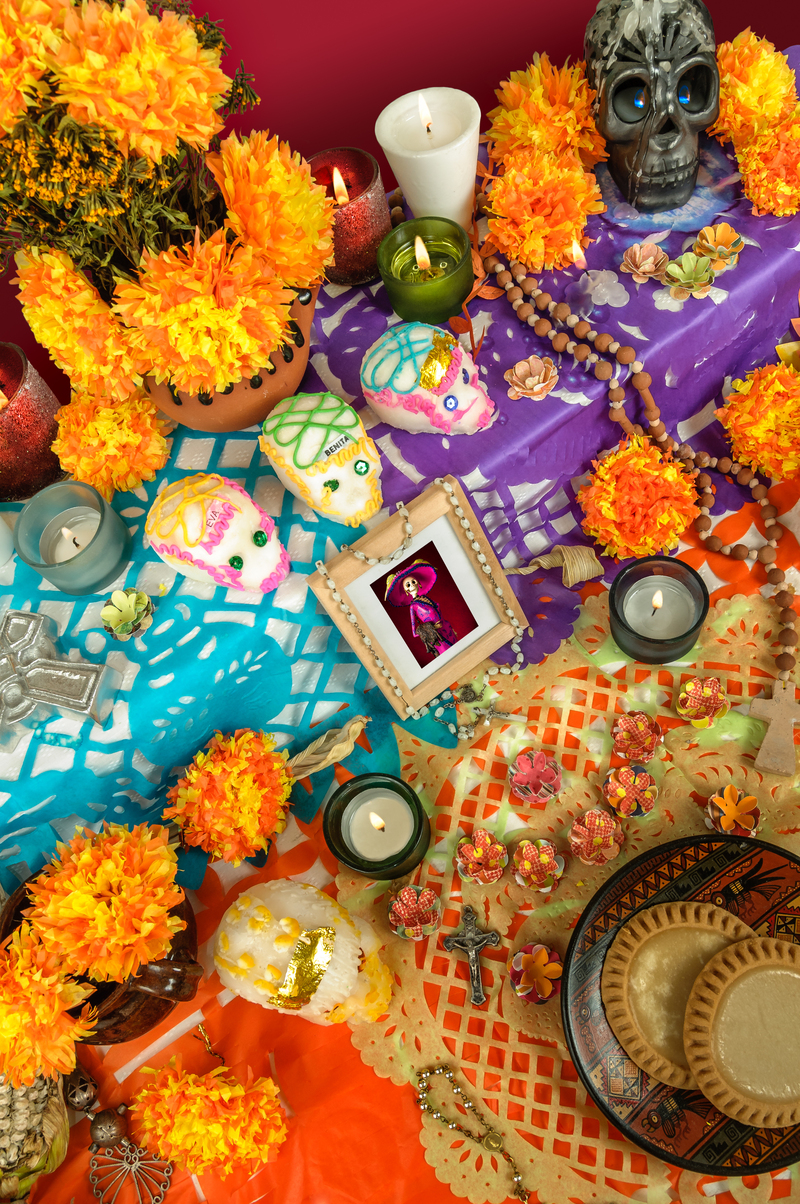Learn About Your Birth Flower and Its Unique Story
Posted on 14/08/2025
Learn About Your Birth Flower and Its Unique Story
Most people know about their birthstones, but did you know that every month also has a birth flower associated with it? These meaningful flowers hold a special place in the hearts of many, each with its own story, symbolism, and traditions. Whether you're seeking the perfect gift, want to learn more about your birthday symbol, or simply appreciate floral beauty, exploring birth flowers can be both fascinating and fun. In this comprehensive guide, you'll learn about your birth flower, its unique story, and what makes it a cherished part of birthday celebrations worldwide.

What Is a Birth Flower?
The concept of a birth flower dates back to ancient times. Each month of the year is linked with one or more specific flowers, believed to reflect the characteristics, emotions, and fortunes of those born during that month. This tradition, rooted in folklore and nature's cycles, makes birth month flowers a meaningful gift and a lovely way to express your connection to the natural world.
- Origin: Birth flowers have origins in Roman and Greek mythology, Victorian England, and in cultures worldwide.
- Symbolism: Flowers convey messages and meanings, making them ideal symbols for birthdays.
- Personal Touch: Gifting someone their birth flower adds a unique, thoughtful, and personalized element to any celebration.
Birth Flowers by Month: Discover Your Floral Symbol
Which flower represents your birthday? Explore the list below to find out! Each section delves into your monthly flower's appearance, meaning, and unique history.
January: Carnation and Snowdrop
- Carnation: Symbolizes love, fascination, and distinction. This hardy winter bloom comes in various colors, each with its own nuanced meaning. Red carnations stand for admiration, while white expresses pure love.
- Snowdrop: Represents hope and rebirth. As one of the earliest flowers to appear after winter, the snowdrop is a sign of new beginnings.
Historically, carnations were worn during important ceremonies in ancient Rome and Greece, while snowdrops were often planted in churchyards to symbolize renewal of life.
February: Violet and Primrose
- Violet: A symbol of modesty, faithfulness, and spiritual wisdom. The gentle violet has a calming scent and appears in shades of deep purple, blue, and white.
- Primrose: Stands for young love and devotion. Primroses are among the first to bloom in spring, signaling the end of winter's chill.
The violet's significance in literature and art makes it a popular flower for poets and romantics, while primroses were considered sacred in Celtic folklore.
March: Daffodil and Jonquil
- Daffodil: Represents rebirth, new beginnings, and prosperity. Daffodils are a harbinger of spring, their bright yellow trumpets bringing cheer wherever they appear.
- Jonquil: Associated with desire, affection, and sympathy. Jonquils, a type of daffodil, have delicate, fragrant clusters.
Celebrated in Welsh culture as a national symbol, daffodils are gifted to express encouragement and joy.
April: Daisy and Sweet Pea
- Daisy: Symbolizes innocence, purity, and loyal love. Daisies are simple, cheerful flowers beloved by children and adults alike.
- Sweet Pea: Signifies blissful pleasure and goodbye. Their delicate ruffled petals come in a pastel rainbow of colors.
In Norse mythology, the daisy is a sacred flower linked with Freya, goddess of beauty and love.
May: Lily of the Valley and Hawthorn
- Lily of the Valley: Represents humility, sweetness, and a return to happiness. Its tiny, bell-shaped blossoms emit a famously sweet scent.
- Hawthorn: Symbolizes hope and supreme happiness. Hawthorn trees bloom with small, white or pink flowers in spring.
In European folklore, lily of the valley was considered a lucky charm for love and marriage.
June: Rose and Honeysuckle
- Rose: Universally associated with love, passion, and beauty. Each color reflects a different sentiment: red for romance, yellow for friendship, white for purity.
- Honeysuckle: Symbolizes devoted affection and the bonds of love.
The rose has a rich history, appearing in myths, religions, and as a prominent motif in art and culture across the globe.
July: Larkspur and Water Lily
- Larkspur: Represents lightness, positivity, and an open heart. Available in pink, white, and blue shades, larkspur is known for its tall, dramatic spikes.
- Water Lily: Symbolizes purity and enlightenment. Its graceful blossoms float serenely atop ponds and quiet lakes.
The water lily is revered in many Eastern cultures as a symbol of transformation and spiritual awakening.
August: Gladiolus and Poppy
- Gladiolus: Stands for strength, integrity, and remembrance. Named after the Latin word for 'sword', their sword-like leaves and bright flower spikes make a bold statement.
- Poppy: Represents consolation and remembrance, often used in symbols for veterans and memorials.
The gladiolus is often used in victory bouquets and to honor life's achievements.
September: Aster and Morning Glory
- Aster: Symbolizes wisdom, faith, and valor. Asters resemble vibrant wild daisies and were thought to have magical properties by ancient Greeks.
- Morning Glory: Represents affection and the fleeting nature of time.
With its pointed petals, the aster is named after the Greek word for 'star'.
October: Marigold and Cosmos
- Marigold: Stands for creativity, passion, and warmth. Their golden-orange hues are a common sight in autumn.
- Cosmos: Symbolize harmony and order, blooming with vibrant colors till the first frosts.
Marigolds play an essential role in Dia de los Muertos celebrations, signifying remembrance and spiritual vitality.
November: Chrysanthemum
- Chrysanthemum: Represents friendship, cheerfulness, and abundance. Available in many colors, mums are the quintessential fall flower.
In Eastern cultures, the chrysanthemum is seen as a symbol of nobility and longevity, especially in Japan.
December: Narcissus (Paperwhite) and Holly
- Narcissus: Symbolizes hope, wealth, and good fortune. The variety Paperwhite is a fragrant holiday favorite.
- Holly: Signifies protection and defense, often used in festive holiday decor to bring cheer and luck.
In Victorian times, the narcissus was gifted to wish prosperity for the new year ahead.
The Meaning Behind Your Birth Month Flower
Each birth flower carries a story, shaped by cultural traditions, myths, and language. Here's how these stories add deeper meaning to your birthday bloom:
- Mythology and Folklore: Many birth flowers are rooted in tales of gods, heroes, and ancient beliefs.
- Victorian Floriography: In the Victorian era, bouquets were used to send secret messages. The language of flowers (floriography) allowed people to express love or admiration without words.
- Symbolic Color: Colors of birth flowers can add layers of meaning.
- Traditions and Celebrations: Birth flowers are often given in bouquets, jewelry, or art throughout birthday festivities and important life milestones.
For example, lilies of the valley are often woven into wedding bouquets in May for their association with happiness and new beginnings. Red roses gifted in June may signify romance and heartfelt devotion.
Interesting Facts About Birth Month Flowers
- Availability: Many birth flowers grow naturally in their representative month, making them perfect for fresh bouquets.
- Multiple Flowers: Some months have more than one birth flower, reflecting regional, historical, or botanical differences.
- Medicinal Uses: Throughout history, certain birth flowers like violets or marigolds have been valued for their healing properties.
- National Symbols: Daffodils and chrysanthemums, for example, are official national flowers in Wales and Japan.
How to Use Your Birth Flower
Your birth month flower can be incorporated into your life and celebrations in creative ways:
- Bouquets and Gifts: Gifting someone their birth flower adds a thoughtful, personal touch.
- Jewelry and Art: Many people wear birth flower necklaces, bracelets, or display art depicting their flower.
- Gardening: Grow your birth flower in your backyard or window garden for a connection to your birthday month all year round.
- Decor: Decorate your home or party with arrangements featuring your birth month flower for meaningful celebrations.
Birth Flower Tattoos: A Lasting Tribute
Birth flower tattoos are increasingly popular for their understated symbolism and beauty. Whether delicate or bold, these tattoos serve as permanent reminders of your birth month's spirit and story.
Choosing the Perfect Gift: Personalized Ideas
Knowing your friends' or family members' birth month flowers can inspire special gifts such as:
- Bouquet of their birth flower elegantly wrapped for birthdays or anniversaries.
- Birth flower jewelry, engraved or shaped in sterling silver, gold, or enamel.
- Homemade candles or soaps scented with the essence of their birth flower.
- Custom art prints or wall decor featuring their birth flower and its unique meaning.
These thoughtful presents celebrate not just a date but the unique story behind each birth month flower.

Interesting Legends: The Stories Behind Select Birth Flowers
The Daffodil: A Tale of Rebirth
According to Greek mythology, the daffodil is associated with Narcissus, a youth who fell in love with his own reflection. The gods turned him into a flower--a symbol of new beginnings--after his tragic end. Thus, daffodils are a poetic reminder that every ending can yield a beautiful start.
The Rose: Emblem of Love Through the Ages
The rose has appeared in stories from Cleopatra's Egypt to Shakespeare's England, becoming a universal symbol of love and romance. Its thorns are said to represent the pain that sometimes comes with passion, adding depth to its meaning.
The Marigold: From Festivals to Folklore
In Mexican tradition, marigolds are called "flowers of the dead" and play a central role in Dia de los Muertos. Their bright orange colors are believed to guide the spirits of loved ones home during the annual celebration, linking the flower to themes of remembrance and honor.
Conclusion: Embrace the Story of Your Birth Flower
Every birth flower is more than a pretty blossom--it's a living symbol woven from myth, tradition, and the rhythm of nature. Learning about your birth flower and its unique story not only adds depth to your birthday traditions but also connects you to centuries of history, culture, and expression. Whether you cherish your own birth flower or celebrate those of loved ones, these blooms offer a lasting and beautiful reminder of the individual spirit each month brings. So, next time you wish someone a happy birthday, consider honoring them with the story and beauty of their own birth month flower.
Discover and celebrate the world of birth flowers--because every story is as unique and beautiful as the person it represents.
Latest Posts
Prolong the Beauty of Your Cut Flowers
Extend the Beauty of Your Poinsettias with These Tips
Unveiling the Mysterious Side of Sunflowers





